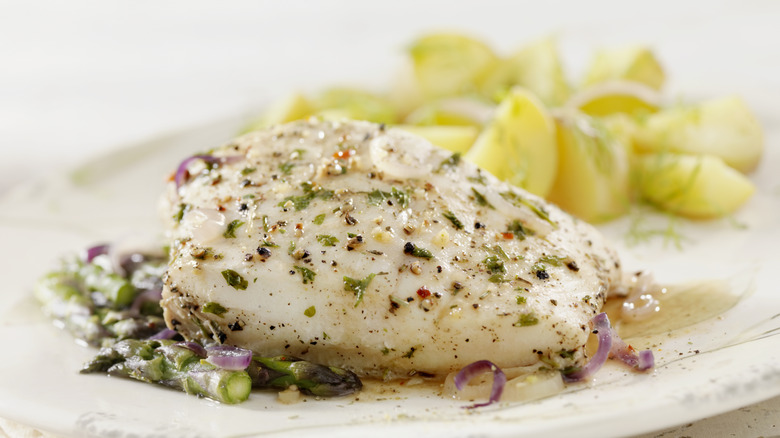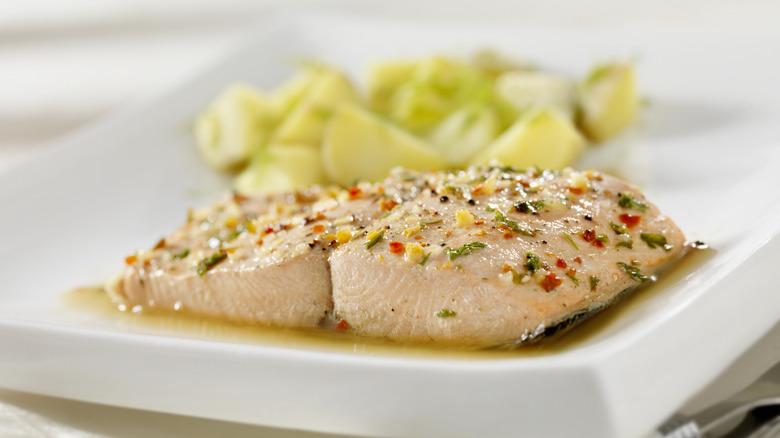The Temperatures You Need To Know For Poaching Different Meats
Poaching is one of humanity's old cooking standbys. It's something we've been doing for hundreds of years, particularly with meat from chicken to beef to fish and shrimp. Sure, sous vide machines may be all the rage, but submerging a cut of meat in a flavorful poaching liquid to infuse it with loads of taste is one of the classic cooking methods we've known to work for a long time.
That being said, how do you know what temperature to use? Poaching is a relatively low and slow process — essentially a faster form of braising — so what's the right point on the dial? The answer is that it depends on what protein you're working with, as not everything is going to take to the surrounding temperature the same way, so you have to base what you're doing on your ingredients. The process starts with a boil, but from there, you need to take care that you're bringing the thermometer down to the right place.
Boil first, then drop the temperature to below a simmer depending on the meat
What a lot of people don't realize is that while you're not boiling meat for poaching (at least, not all the way through), you do boil the liquid to jump-start the process. You can use all sorts of liquids here — salted water, stock, red or white wine, even milk — but whatever it is, you want to boil it first (and make sure there's just enough in there to completely cover the meat). Then, the meat is added, and that's the point at which you drop the temperature.
The temp you hit depends on the specific protein you're preparing. For seafood, you're aiming for between 175 and 185 degrees Fahrenheit, but for beef (yes, you can poach beef) or chicken, you're looking at 160 to 175 degrees Fahrenheit. You can use a thermometer to check where you're at, but if you don't have one, you're fine as long as you're sitting somewhere under a simmer.
Make sure you give it time to poach at that temperature
As far as how long to give it, as noted, poaching isn't something you want to rush. It's not going to take hours like braising does, but it's not going to be done with the speed of a sear, either. Again, this depends on the protein you're working with; fish will typically be done in around 10 minutes, while chicken or beef will be closer to 15 to 20 minutes. It's also probably a good idea to cut into the meat to make sure you're not dealing with undercooked chicken — nobody wants to eat a likely Salmonella Surprise.
Ultimately, poaching meat is like any other cooking method in that you have to base what you're doing on the ingredients you're using. There's no one-size-fits-all solution to the parts of the process that involve specific cooking temperatures, but as long as you pay attention to the details, you'll have a easy time and make a great dinner.


